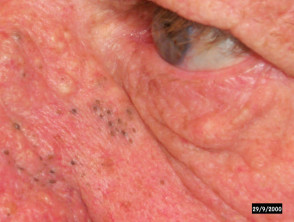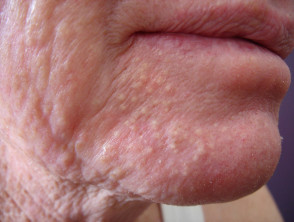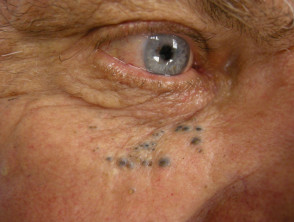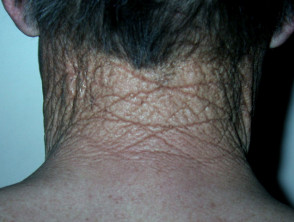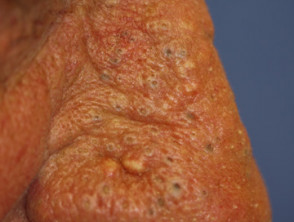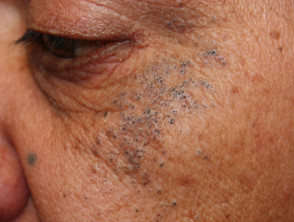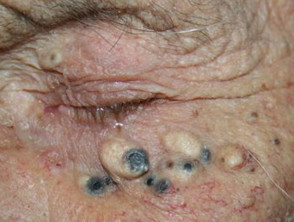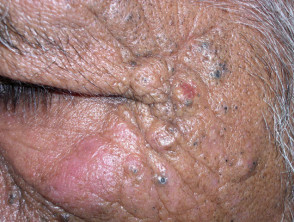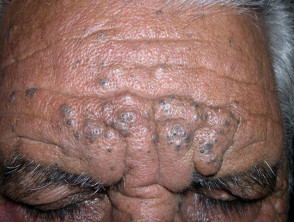What is a solar comedo?
A solar or senile comedo (plural comedones) is a small skin coloured papule found on the face of a middle-aged or older person. Solar comedones affect areas that have been exposed to sunlight over a long period of time.
The comedones may be open (blackheads) or closed (whiteheads). They do not usually become inflamed.
Solar comedones are not related to acne vulgaris.
Solar comedones
Favre-Racouchot syndrome
Solar comedones and larger pseudocysts occur in association with solar elastosis, which causes yellowish, leathery skin and deep furrows. This appearance is also known as Favre-Racouchot syndrome. It may affect the skin around the eyes, the temples and the neck. Favre-Racouchot syndrome is thought to be due to a combination of sun exposure and heavy smoking.
Favre-Racouchot syndrome
Management of solar comedones
- Use sun protection and apply oil-free sunscreen to exposed skin
- Stop smoking
- Wash affected areas twice daily with mild soap or cleanser and water
- Apply retinoid cream to affected areas at night (this requires a doctor's prescription)
- Apply light moisturisers if the skin is dry (dryness may be aggravated by the retinoid)
- The contents of the comedones can be squeezed out gently using a "comedo expressor", an instrument which can be purchased at a pharmacy.
If these measures are unhelpful, the comedones can often be removed by electrocautery or laser ablation. They may recur and require further treatment from time to time.
